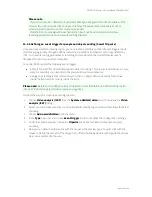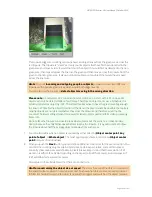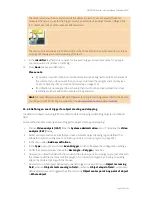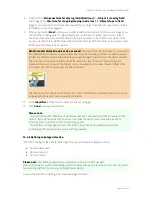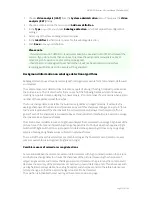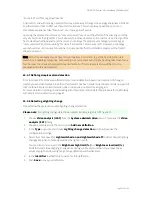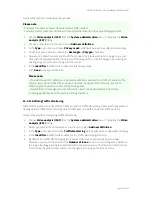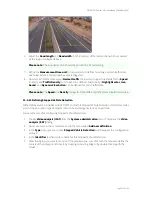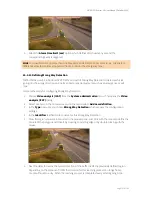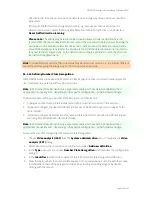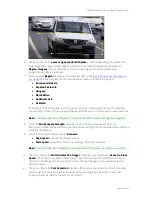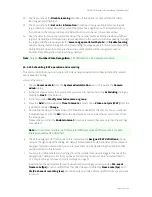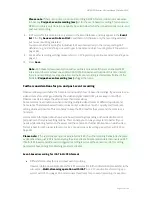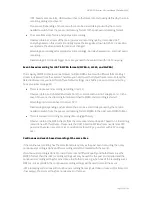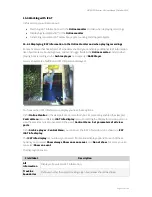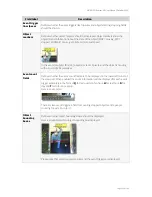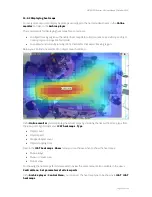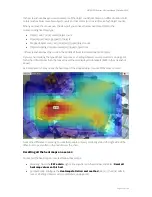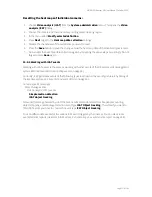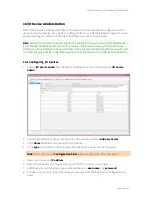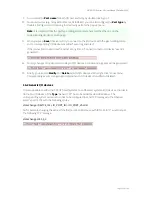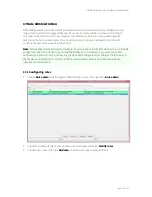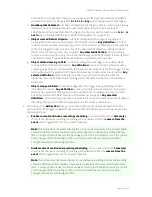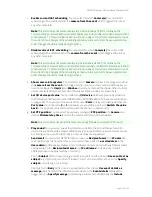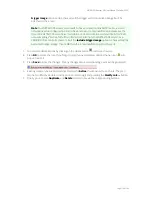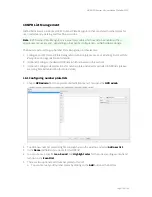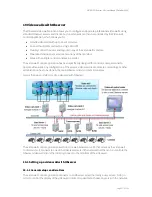
NETAVIS Observer 4.6 User Manual (October 2015)
Page 162 of 204
iCAT-based event or alarm, Observer switches to the frame rate and quality defined by the main
recording settings (post event).
Please note: Depending on the camera there can be a small delay caused by the camera
needed to switch from the pre-event streaming format to the post-event streaming format.
The same frame rate for pre and post-event recording
Observer obtains 1 stream of the main (post-event) recording quality. It also does iCAT
analyzing based on this stream (it actually scales the image sizes down to QVGA). In case of an
event/alarm, the video stream format is not changed.
Advantage: same images for pre/post event recordings. No delay between pre- and post-event
recording.
Disadvantage: CPU load is bigger since images need to be scaled down for iCAT analyzing.
Event-based recording for iCAT in MPEG formats (MPEG-4, H.264, and MxPEG)
The majority of MPEG cameras cannot deliver multiple MPEG streams with different formats. Only 1
stream is delivered from the camera. Therefore you need to set the default frame rate to at least the
detection frame rate you need for iCAT (see Default settings in
4.2 Adding a new camera and setting
basic properties
on page 31).
There is no pre-event recording (recording time is 0)
Observer obtains a QVGA MJPEG stream from the camera and runs iCAT analyses on it. In the
case of an event, the streaming format is switched to MPEG and recording is started.
Advantage: minimal overhead on server CPU.
Disadvantage: Depending on the camera there can be a small delay caused by the camera
needed to switch from the pre-event streaming format MJPEG to the post-event MPEG format.
There is pre-event recording (recording time is bigger than 0)
Observer obtains the MPEG stream from the cameras and also does iCAT based on it. Recording
is also done with this stream. Please note that iCAT based on MPEG stream needs more CPU
power on the server (see also
15.2.1 Considerations for setting up a system with iCAT
on page
142).
Continuous and event-based recording at the same time
If the continuous recording has the same frame rate quality as the post-event recording, then only
continuous recording is done and the recording calendar is marked with the events.
If continuous recording is done at a lower frame rate or different quality and both streams use the
MJPEG format, then the iCAT recording settings will only be used for the post alarm period and the
continuous recording settings for other times. In all other cases, e.g. when one of the recordings uses
MPEG-4 / H.264 / MxPEG, the continuous recording settings will be used to record the event.
iCAT processing will be done with continuous recording frames (scaled down in size and/or frame rate
if necessary). Pre-alarm setting has no relevance in this case.

